The Size of the Universe
From asteroids to the largest structures in existance. This page explores the size of objects in our universe.
- 1 -
The International Space Station
Diameter: 108m
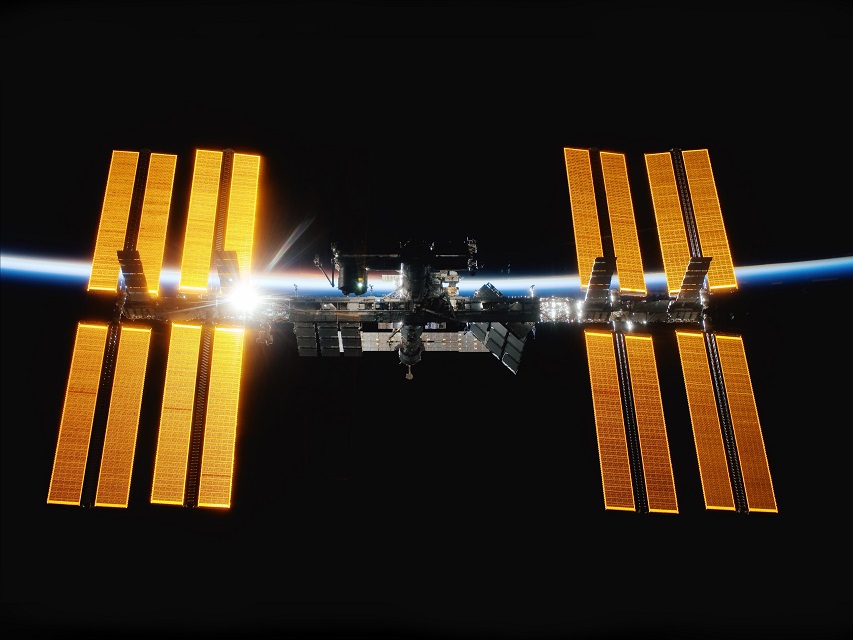
A view of the International Space Station over Earth
Facts:
The ISS contains about as much living space as a 6-bedroom house, and weighs 420,000kg
The ISS was assembled in pieces across 42 seperate rocket launches
The ISS completes 16 full orbits of the Earth each day, or one full orbit every 90 minutes
The ISS has been continuiously occupied since November 2000
- 2 -
Deimos
Diameter: 12.4km
Facts:
Deimos is the smallest of the two Martian moons
It orbits the planet every 30 hours
The composition of Deimos is similar to that of asteroids in the outer asteroid belt

The second moon of Mars, Deimos
- 3 -
Neutron Stars
Diameter: 20km
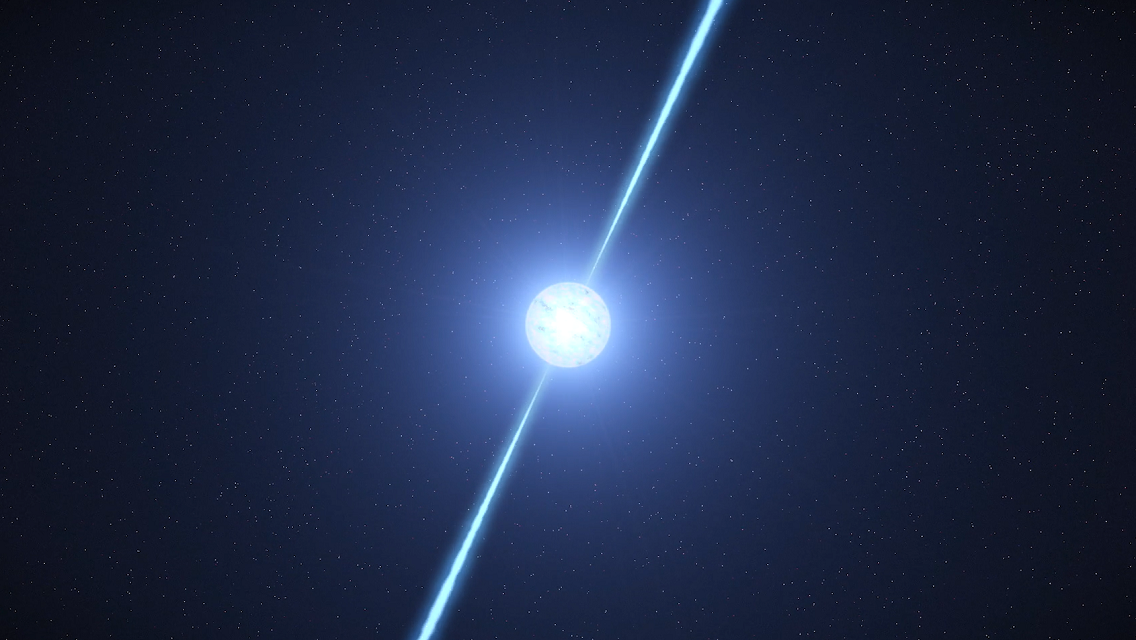
An illustration of a neutron star emitting electromagnetic radiation
Facts:
Despite their size they can have as much as twice the mass of the Sun!
They are the densest objects in the universe, after black holes
Neutrons stars spin very fast. The fastest neutron stars can spin tens of thousands of times a minute
- 4 -
Vesta
Diameter: 525km
Facts:
Vesta was discovered in Bremen, Germany in 1807 by Heinrich Wilhelm Olbers
Vesta is the largest asteroid in the asteroid field, and second largest object, after Ceres
It is one of the brightest objects in the sky, sometimes even visible to the naked eye
Vesta is one of the oldest objects in the solar system, only 1-2 million years younger than the Sun!

The asteroid Vesta
- 5 -
Ceres
Diameter: 946km
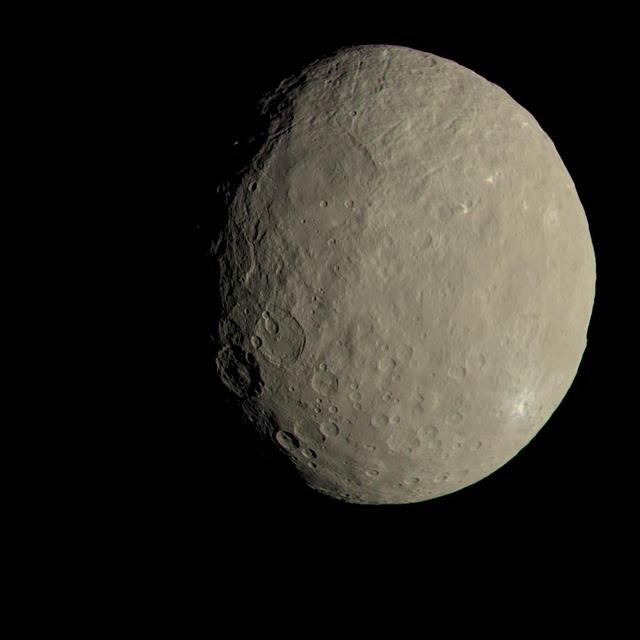
Dwarf planet and asteroid, Ceres
Facts:
Ceres is a dwarf planet in the asteroid belt, between Mars and Jupiter
Ceres is the largest object in the asteroid belt, comprising nearly a quarter of the asteroid belt's entire mass!
It was considered the largest asteroid in the solar system until it was reclassified as a dwarf planet in 2006
- 6 -
Pluto
Diameter: 2377km
Facts:
Pluto is the largest dwarf planet in the solar system
It was discovered in 1930, and was, for a long time, considered the solar system's 9th planet, until it was reclassified in 2006
One of Pluto's moons, Charon, is half the size of the planet itself!

An image of Pluto captured by New Horizons
- 7 -
The Moon
Diameter: 3475km

The Moon in waning gibbous
Facts:
The Moon is believed to have formed when a planet the size of Mars collided with the Earth billions of years ago
It is the 5th largest moon in the solar system
It is the only celestial body, other than Earth, that humans have landed on
The Moon is slowly drifting away from the Earth, at a rate of about one inch a year
- 8 -
Mercury
Diameter: 4879km
Facts:
Mercury is the smallest planet in the solar system
It is also the fastest planet, orbiting around the Sun in just 88 Earth days
Due to its close orbit to the Sun, Mercury is technically the closest planet, on average, to every other planet in the Solar System
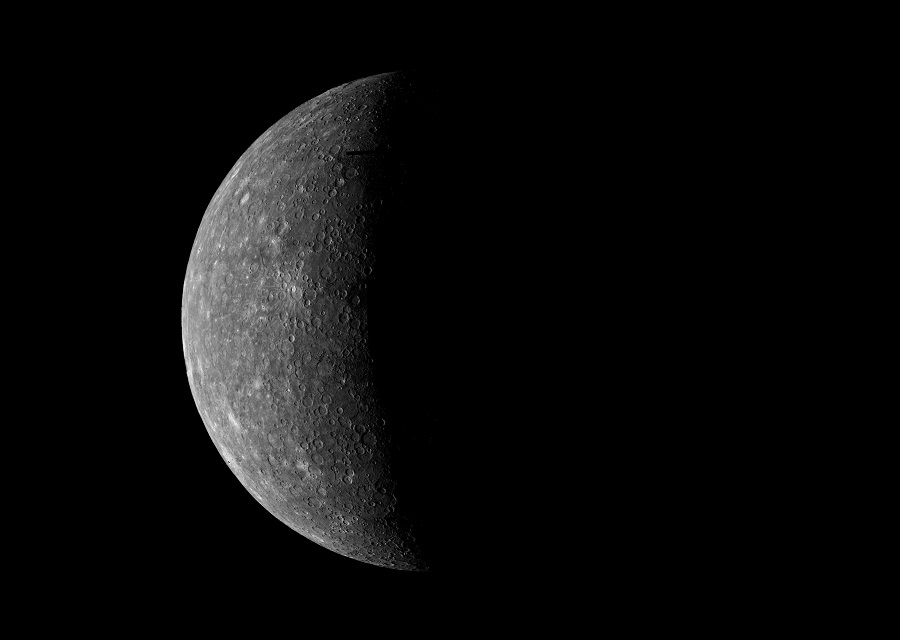
An image of Mercury
- 9 -
Ganymede
Diameter: 5268km

An image of Jupiter's largest moon, Ganymede
Facts:
Ganymede is the largest moon in the Solar System. It is larger than both Mercury and Pluto
It orbits Jupiter as one of the four Galilean moons, named after their discoverer, Galileo Galilei
It is the only moon known to have its own magnetic field
- 10 -
Mars
Diameter: 6779km
Facts:
Mars is the second smallest planet in the Solar System after Mercury
It is the outermost of the four rocky planets, orbiting between Earth and the asteroid belt
Mars is often called the "Red Planet" due to a layer of rust coating the surface
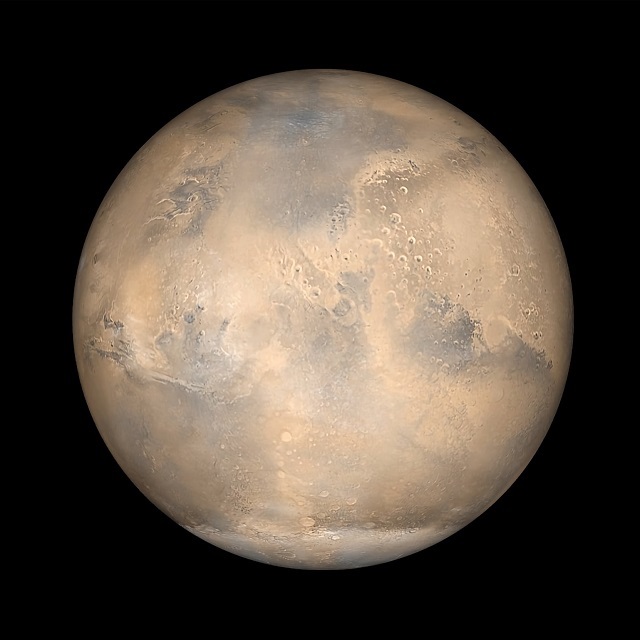
An image of Mars
- 11 -
White Dwarf Stars
Diameter: 11,200km - 24,000km
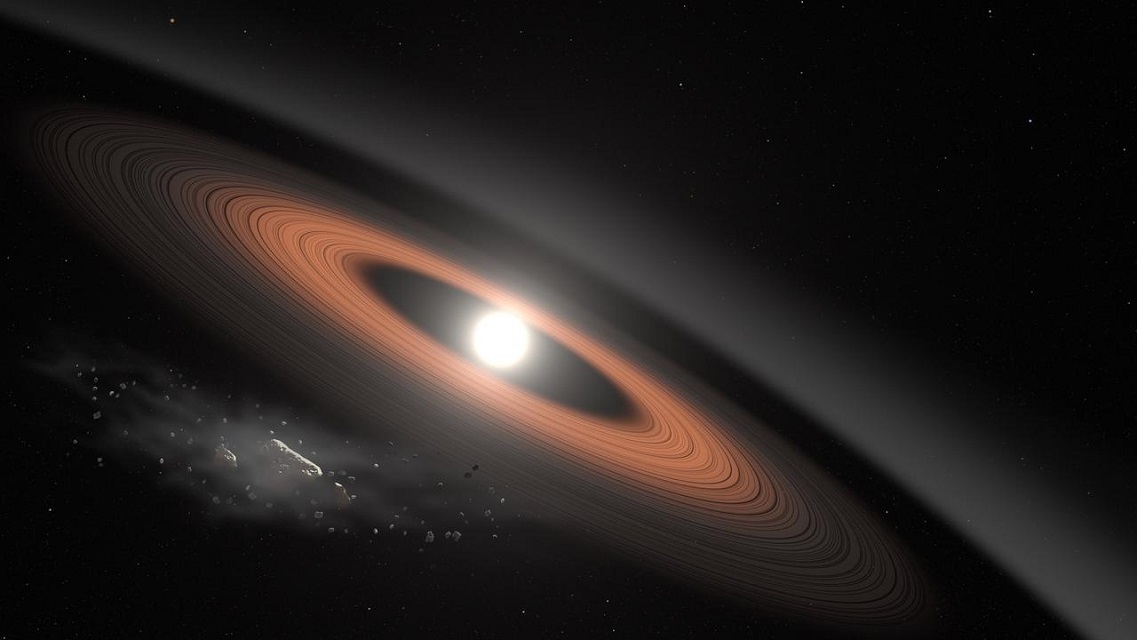
An illustration of a White Dwarf Star surrounded by a cloud of debris
Facts:
White Dwarf stars are the remnants of stars that have exhausted all of their fuel
Approximately 97% of stars in the Milky Way will eventually become White Dwarf stars
White Dwarfs are the third densest objects in the universe, after black holes and neutron stars
- 12 -
Venus
Diameter: 12,104km
Facts:
Venus is the hottest planet in the solar system
It is the second largest of the rocky planets, only narrowly smaller than Earth
It is much hotter than Mercury, despite being further away, thanks to its dense atmosphere
Venus is the brightest object in the night sky after the Moon
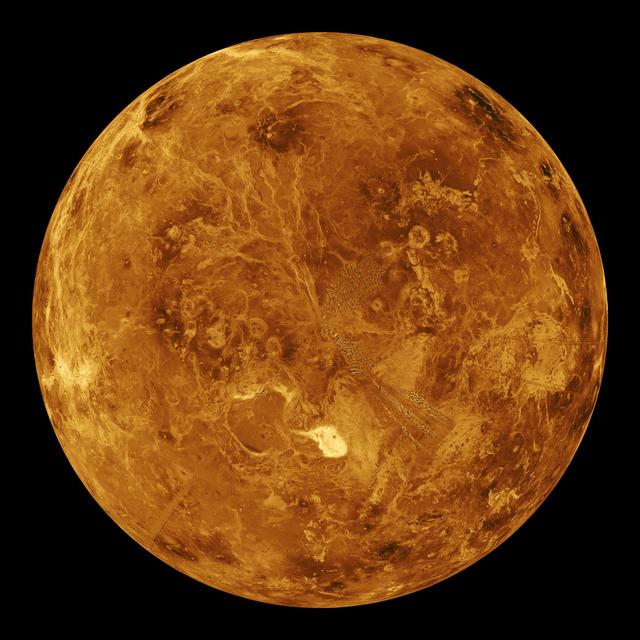
An image of Venus
- 13 -
Earth
Diameter: 12,742km

Cities of Earth at night
Facts:
Earth is the largest of the rocky planets, and 5th largest planet in our Solar System
It is the densest planet in the solar system.
It is one of only two bodies in the solar system with a hydrologic cycle
- 14 -
Neptune
Diameter: 49,244km
Facts:
Neptune is the 4th largest planet in the solar system, and smallest of the two ice giants
It is the farthest planet from the Sun in our Solar System
Neptune has the strongest winds of any planet in our Solar System. Reaching up to 2000km/h
It is the densest of the Solar Systems four giant planets
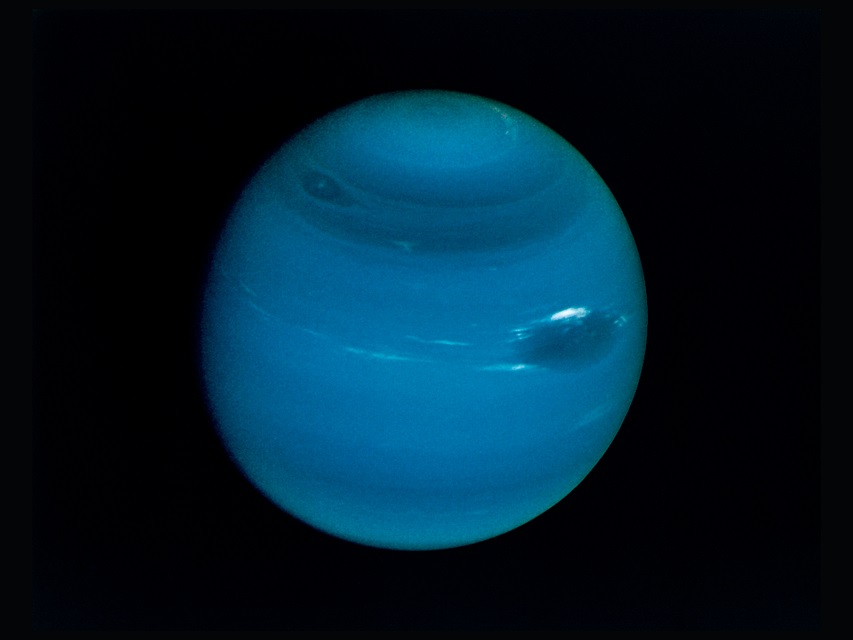
An image of Neptune
- 15 -
Uranus
Diameter: 50,724km
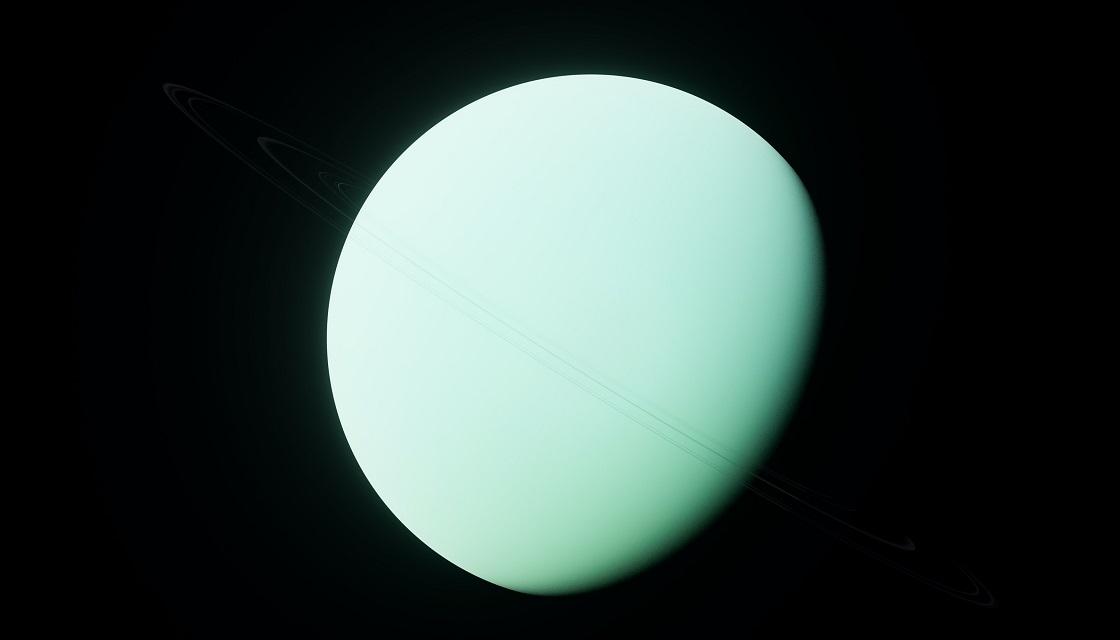
An artists depiction of Uranus with rings
Facts:
Uranus is the 3rd largest planet in the solar system, and the largest of the two ice giants
Despite being larger in diameter than Neptune, it is actually less massive
Uranus sits at a permanent 97.7 degree tilt. As a result, the planet rotates almost north to south, and the north pole permanently faces the Sun
This is believed to be the result of a collision with an Earth-sized planet billions of years ago
- 16 -
Red Dwarf Stars
Diameter: 70,000km - 350,000km
Facts:
Red Dwarf stars can survive for up to 10 trillion of years
The closest star to our solar system, Proxima Centauri, is a red dwarf star
Red Dwarf stars are the most common star type in the Milky Way, comprising about 70% of all stars
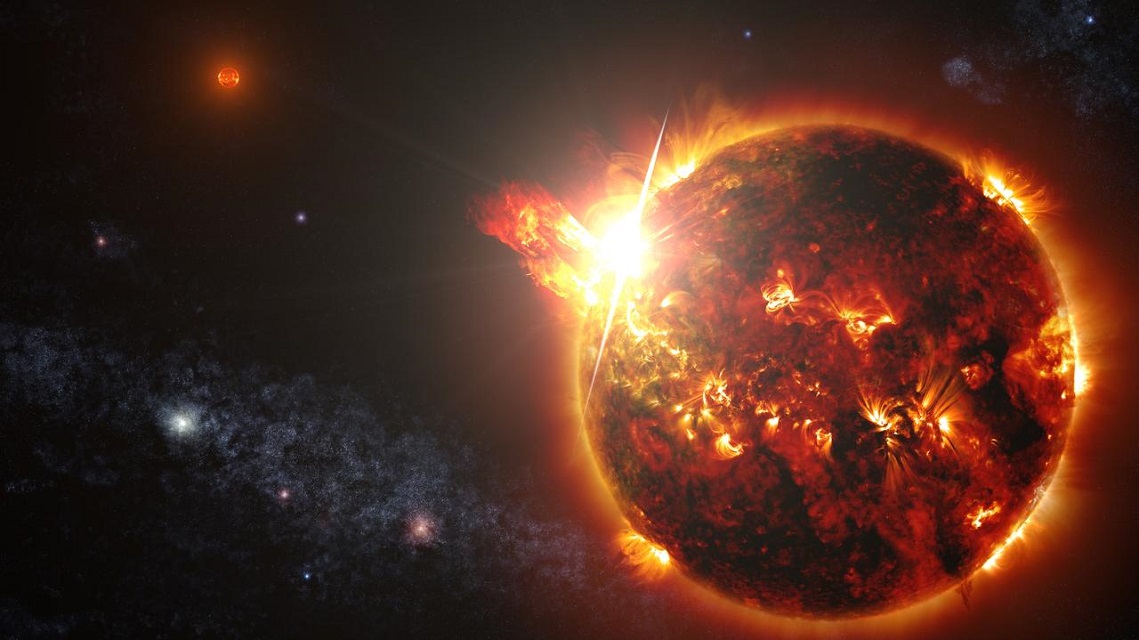
An illustration of a binary Red Dwarf system
- 17 -
Saturn
Diameter: 116,460km (282,000km with rings)
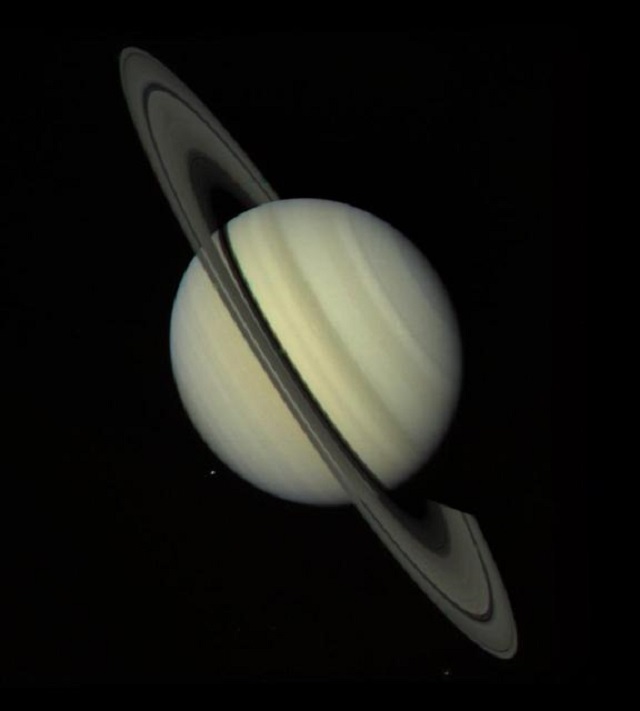
An image of Saturn with rings
Facts:
Saturn is the 2nd largest planet in the Solar System
It is also the least dense planet in the Solar System, with an average density lower than water
Saturn is home to the largest set of rings in the Solar System, as well as more than 100 moons
- 18 -
Jupiter
Diameter: 142,984km
Facts:
Jupiter is the largest and most massive planet in our Solar System
The Great Red Spot is the largest storm on Jupiter at over twice the width of the Earth
Jupiter's magnetosphere extends outwards behind Jupiter for over 1 billion kilometers! Far enough to reach Saturn
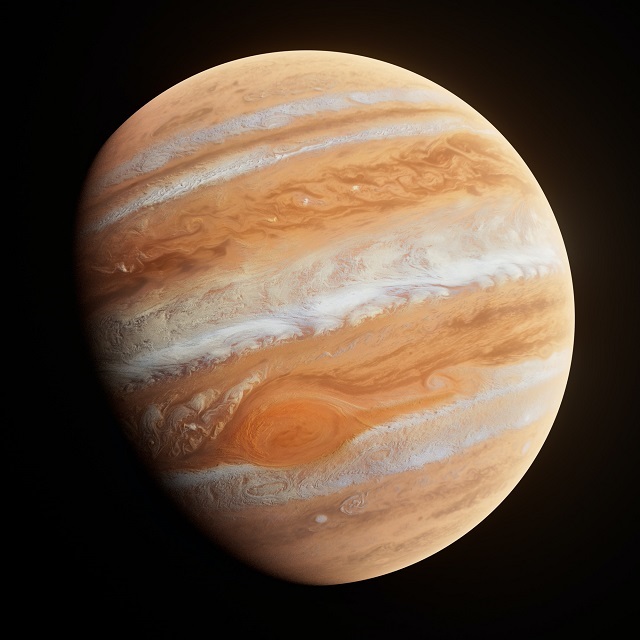
An artists depiction of Jupiter
- 19 -
GQ Lupi b
Diameter: 930,000km
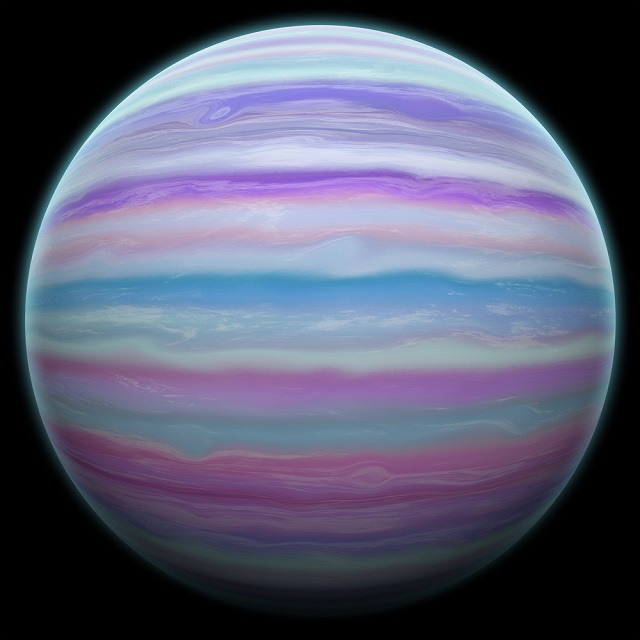
An illustration of a large exoplanet, similar to GQ Lupi B
Facts:
It is the largest planet ever found, at over 6.5x the diameter of Jupiter
GQ Lupi B was discovered in 2005, and listed as a "confirmed planet" in 2020
It is so large that some believe it to be a brown dwarf star
- 20 -
The Sun
Diameter: 1,392,000km
Facts:
The Sun accounts for 99.8% of the mass of the entire solar system
It is a Type G "Yellow Dwarf" star. Although, despite the name, it is roughly of average size
The Sun will eventually expand into a red giant, which will engulf the inner solar system, before collapsing back down into a white dwarf star
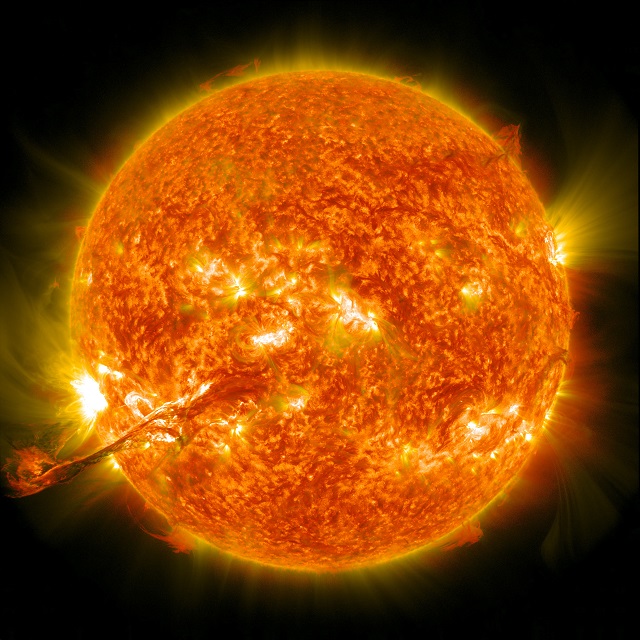
An image of the Sun
- 21 -
Sagittarius A
Diameter: 51,800,000km
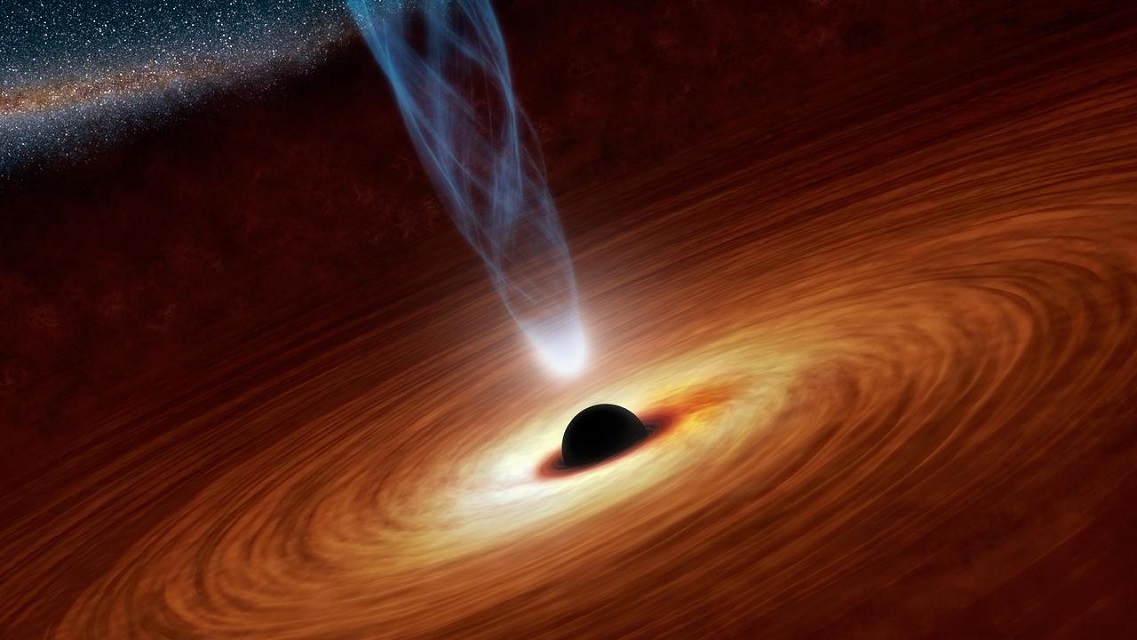
An illustration of a supermassive black hole like Sagittarius A
Facts:
Sagittarius A is a supermassive black hole at the centre of the Milky Way
It contains around 4 million times the mass of our Sun!
- 22 -
UY Scuti
Diameter: 2,376,500,000km
Facts:
UY Scuti is the largest star ever discovered
By volume it is almost 5 billion times the size of our Sun
if the Sun was replaced by UY Scuti, its outer edge would reach all the way to Jupiter!
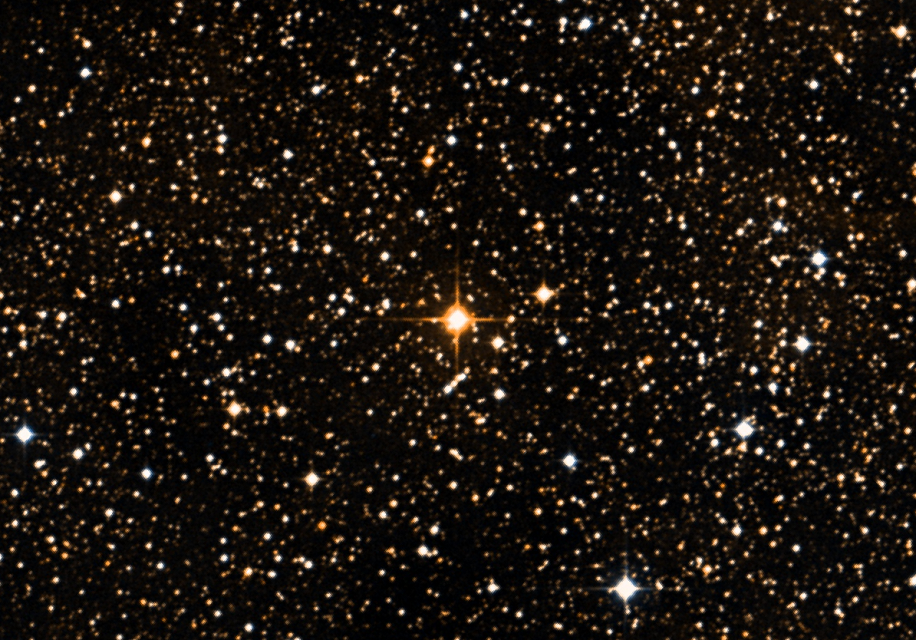
An image of UY Scuti
- 23 -
Phoenix A
Diameter: 590,500,000,000km
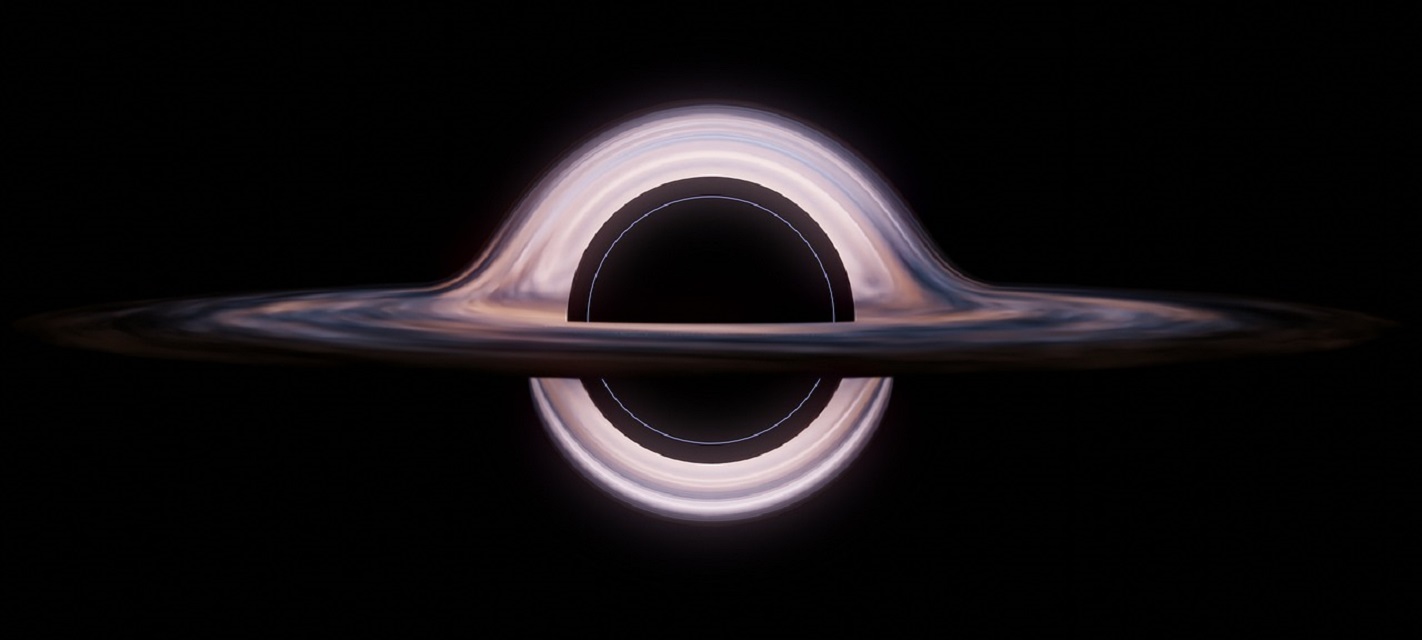
An illustration of a supermassive black hole like Phoenix A
Facts:
Phoenix A is the largest black hole ever discovered
if the Sun was replaced by Phoenix A its outer edge would reach 100 times farther than the distance to Pluto
It is 24,100 times more massive than Sagittarius A, the black hole at the centre of the Milky Way
It is more than twice as massive as the entire Triangulum Galaxy, one of the closest galaxies to the Milky Way
- 24 -
The Oort Cloud
Diameter: 800,000AU (119.67 Trillion km)
Facts:
The Oort Cloud is a giant shell of icy debris surrounding the outer edge of the Solar System
It exists at the farthest point of the Sun's influence, and may reach as much as halfway the distance to the nearest star, Proxima Centauri
The Oort cloud may contain upwards of 1 trillion objects larger than 1km
Halley's Comet is believed to have originated in the Oort Cloud
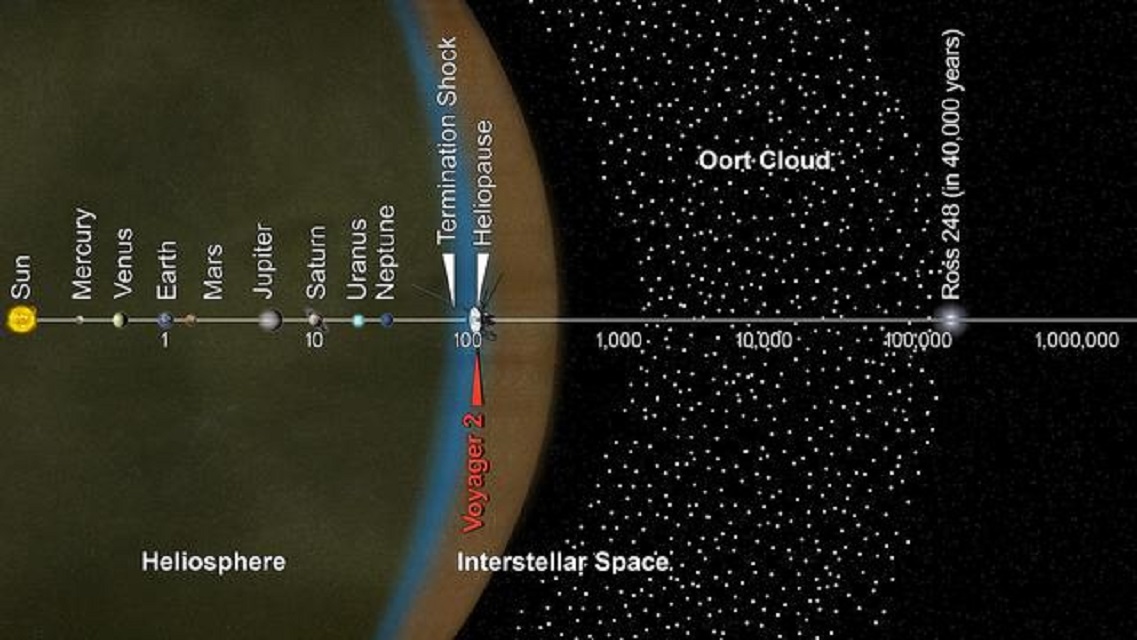
A logarithmic diagram of the Solar System, showing the scale of the Oort Cloud
- 25 -
Eagle Nebula
Diameter: 70 Light Years (662.25 Trillion km)
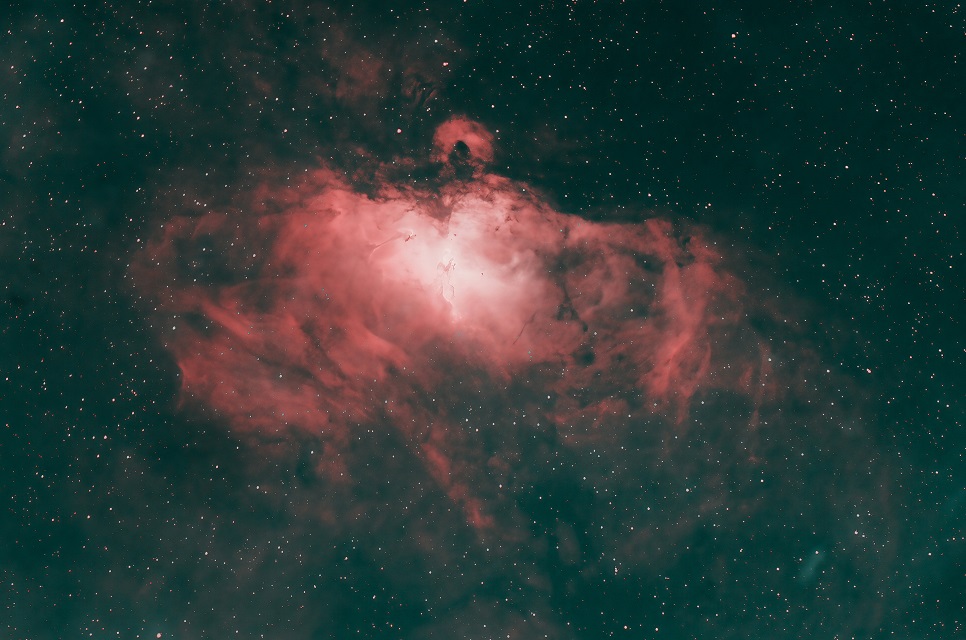
An image of the Eagle Nebula
Facts:
The Eagle Nebula resides in the constellation Serpens and is best known for containing the Pillars of Creation
It was discovered in 1745 by Swiss astronomer Jean-Philippe Loyus de Chéseaux
A study from 2007 proposed that the Eagle Nebula may have been destroyed by a supernova 6,000 years ago, but the light hasn't reached us yet
- 26 -
The Milky Way
Diameter: 105,700 Light Years (999.99 Quadrillion km)
Facts:
The Milky Way is our home galaxy
It is estimated to be around 13.6 billion years old, having formed just 100 million years after the Big Bang
The Milky Way is home to over 200 billion stars
The Milky Way rotates like a planet. It is so large that a single full rotation takes 250 Million Years
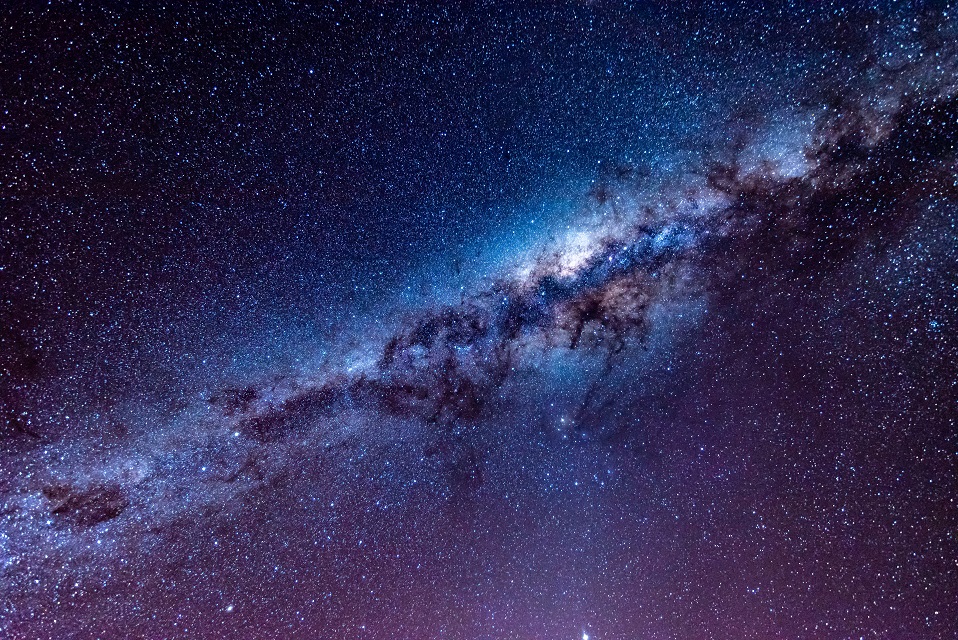
An image of the Milky Way galaxy as seen from Earth
- 27 -
Andromeda
Diameter: 152,000 Light Years (1.43 Quintillion km)
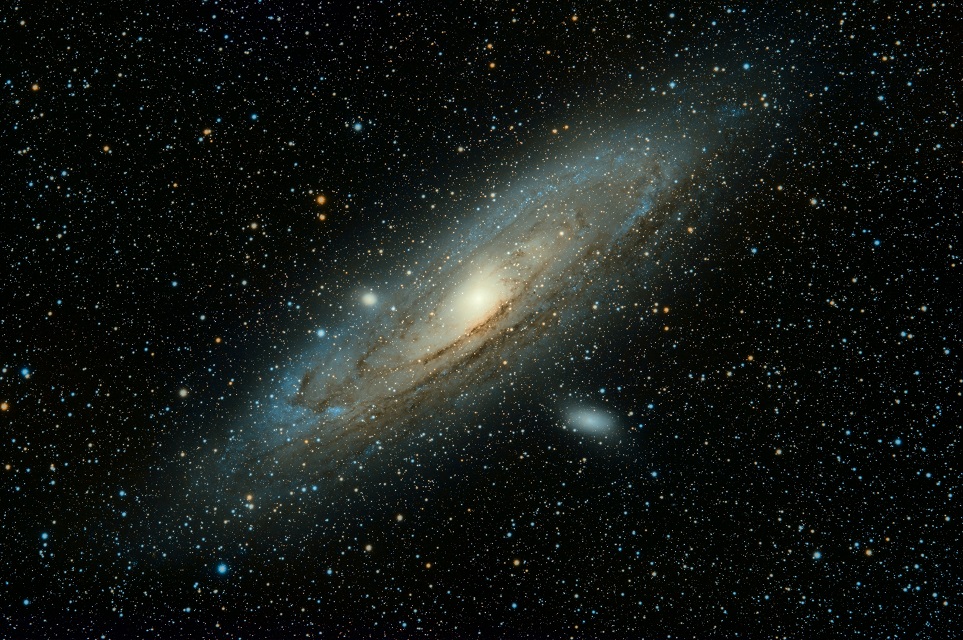
An image of the Andromeda galaxy
Facts:
The Andromeda galaxy is the closest large galaxy to the Milky Way
It is much larger that the Milky Way, containing over 1 trillion stars
In 4.5 billion years the Milky Way and Andromeda galaxies will collide, creating an even larger galaxy
Andromeda is approaching the Milky Way at approximately 100 kilometers per second
- 28 -
ESO 383-G 076
Diameter: 1,760,000 Light Years (16.65 Quintillion km)
Facts:
ESO 383-G 076 is one of the largest galaxies in the universe
Unlike the Milky Way and Andromeda, which are spiral galaxies, ESO 383-G 076 is elliptical (oval shaped)
As a result, the galaxies major axis is more than twice the length of its minor axis
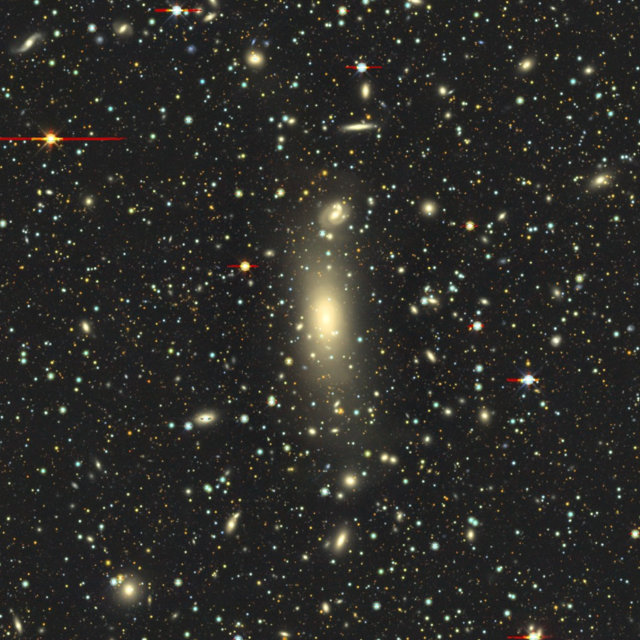
An image of ESO 383-G 076
- 29 -
Laniakea Supercluster
Diameter: 520,000,000 Light Years

An illustration of the Laniakea Supercluster
Facts:
The Laniakea Supercluster is a collection of over 100,000 galaxies, including the Milky Way
Galaxies within the Laniakea Supercluster are gravitationally drawn to a point in space known as The Great Attractor
Given enough time, the Laniakea Supercluster will be torn apart by dark matter
- 30 -
The Hercules-Corona Borealis Great Wall
Diameter: 10,000,000,000 Light Years
Facts:
The Hercules-Corona Borealis Great Wall is a galactic filament, or collection of galactic superclusters
It is the largest known structure in the observable universe

An illustration of the Hercules-Corona Borealis Great Wall
- 31 -
The Observable Universe
Diameter: 93,016,000,000 Light Years
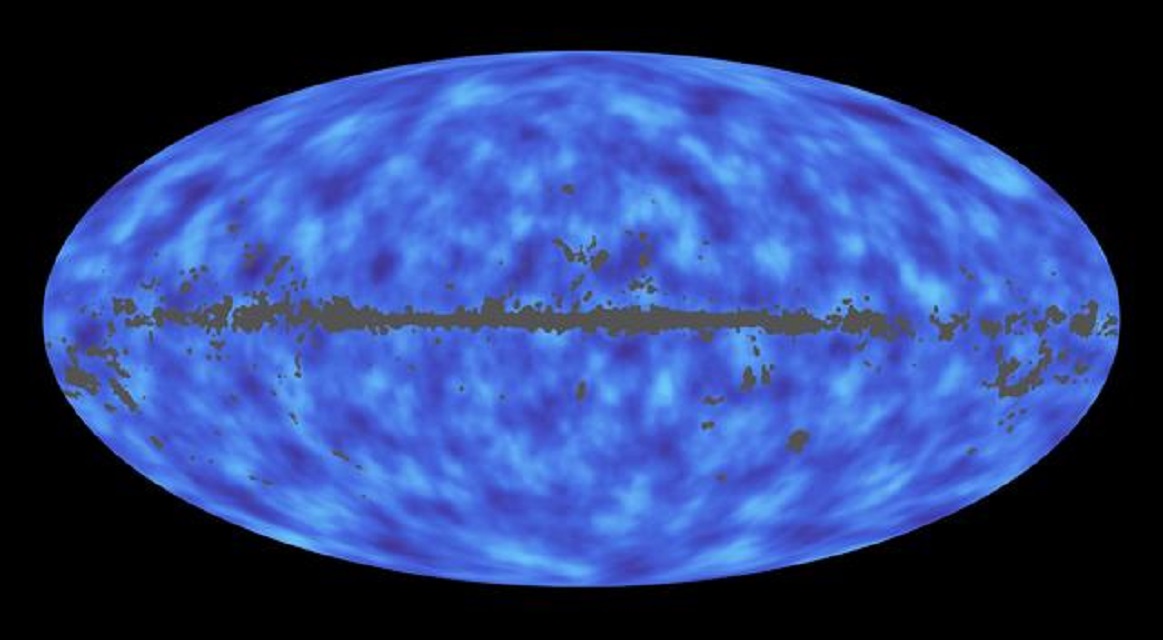
An illustration of the observable universe
Facts:
The observable universe is a sphere containing everything that can be observed from Earth
Anything beyond this sphere cannot be detected, as no information has had enough time to travel to Earth since the formation of the universe
The observable universe contains hundreds of billions of galaxies and up to 1 septillion stars
The observable universe is not a structure, but a region of observation from a specific point in space. Therefore every point in space has its own observable universe